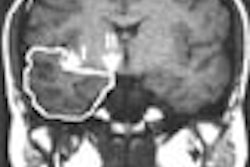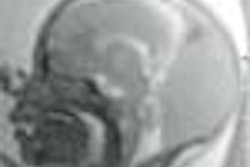Functional MRI is living up to its promise as a window on the brain at work, as exemplified by two recently published studies that used fMRI to track neurological activity associated with learning and ethical decision-making.
In a study reported in the October issue of Nature Neuroscience, Cambridge University psychiatrist Paul Fletcher and colleagues used functional MRI to explain the neurophysiology behind a phenomenon already established by behavioral studies: that human learning is facilitated by surprising information and unpredictable occurrences (October 2001, Vol. 4:10, pp. 1043-1048).
Based on earlier experiments, the researchers had hypothesized that the region of the brain that reflects learning could be identified by its activity at particular times. This region would be more active during the initial learning period, when every event is unpredictable, and would be reactivated when rare surprising information popped up in the midst of otherwise predictable information and violated what had been "learned."
To identify the brain’s learning center, the British group scanned 12 right-handed volunteers while teaching them via fictitious drug company "case studies."
The fMRI scans were obtained with a Bruker Medspec (Ettlingen, Germany) scanner operating at 3 tesla. A total of 151 T2-weighted echo-planar images with BOLD (blood oxygenation level dependent) contrast were acquired each session, with the first six images per session subsequently discarded to avoid T1 equilibration effects.
Each image generated 21 4-mm slices. Data analysis was performed with statistical parametric mapping using the SPM99 program (Wellcome, London, UK), and included slice-acquisition time correction, within-subject image realignment, spatial normalization to a standard template, and spatial smoothing using a Gaussian kernel (8 mm full width at half-maximum).
Borrowing the made-up names from an earlier behavioral study, the researchers presented cases in which a fictitious drug (Dugetil, Batatrim, or Aubina) was adminstered. The volunteers were asked to predict whether a fictitious syndrome (Hamkaoman, Huxley, or Lyndsay syndrome) would then occur, and then received the answer. The part of the brain that was activated as predicted (during initial learning and when surprised) was the dorsolateral prefrontal cortex (DLPFC).
The DLPFC response was also greater, and more predictive of subsequent behavioral change, in response to negative causal relationships. As a result, if the volunteer was surprised to learn that a drug was associated with a syndrome, the event generated more DLPFC activity than the "surprise" that no drug administration caused no syndrome.
"It has been suggested that unpredictability is a sine qua non for learning," the authors wrote. "We suggest that the pattern of activity observed here in right DLPFC makes this region a highly plausible candidate for a key locus of surprise-dependent learning in humans," they continued. "Specifically, activity seems to reflect the way in which subjects reevaluate learned relationships or expectancies in response to unpredictability."
In the second study, reported in the journal Science, researchers at Princeton University in Princeton, NJ, used fMRI to confirm that emotion affects how people decide difficult moral judgment calls (September 14, 2001, Vol. 293: 5537, pp. 2105-2108).
Joshua Greene and colleagues from the Center for the Study of Brain, Mind, and Behavior used fMRI to see what the brain is doing when it comes to different decisions while wrestling with two similar ethical problems: the trolley dilemma versus the footbridge dilemma.
In the former, a runaway trolley is headed for five people who will be killed unless it is switched to another track, where it will kill just one person. Most people facing this dilemma say they would throw the switch. In the footbridge dilemma, the only way to save the five people is to push one large stranger from a footbridge into the trolley’s path. Yet most people say they wouldn’t do that.
The researchers theorized that the critical difference between these dilemmas is the personal versus the impersonal involvement in a killing. "The thought of pushing someone to his death is, we propose, more emotionally salient than the thought of hitting a switch that will cause a trolley to produce similar consequences, and it is this emotional response that accounts for people’s tendency to treat these cases differently," the authors wrote.
Using a 3-tesla Allegra dedicated brain scanner (Siemens Medical Solutions, Iselin, NJ) , the researchers looked for evidence of emotion-related brain activity as people considered 60 dilemmas involving "moral-personal," "moral-impersonal," or "non-moral" (e.g., which bus to take) conditions.
"In each case, the ANOVA [thresholded analysis of variance] identified all brain areas differing in activity among the moral-personal, moral-impersonal, and non-moral conditions," the authors wrote. "Planned comparisons on these areas revealed that medial portions of Brodmann's areas (BA) 9 and 10 (medial frontal gyrus, BA 31 (posterior cingulate gyrus), and BA 39 (angular gyrus, bilateral) were significantly more active in the moral-personal condition than in the moral-impersonal and the non-moral conditions. Recent functional imaging studies have associated each of the areas with emotion."
The researchers also found that their subjects took far longer to arrive at an "emotionally incongruent" decision, such as deciding that it was "appropriate" to push the man in the footbridge dilemma. The behavioral influence of emotional responses, they concluded, "is most strongly suggested in the performance of those participants who judge in spite of their emotions."
By Tracie L. ThompsonAuntMinnie.com contributing writer
November 15, 2001
Related Reading
Brain imaging confirms loss of social skills in schizophrenia, December 6, 2000
Neuroscientists map physiology of feelings, September 20, 2000
Copyright © 2001 AuntMinnie.com



















